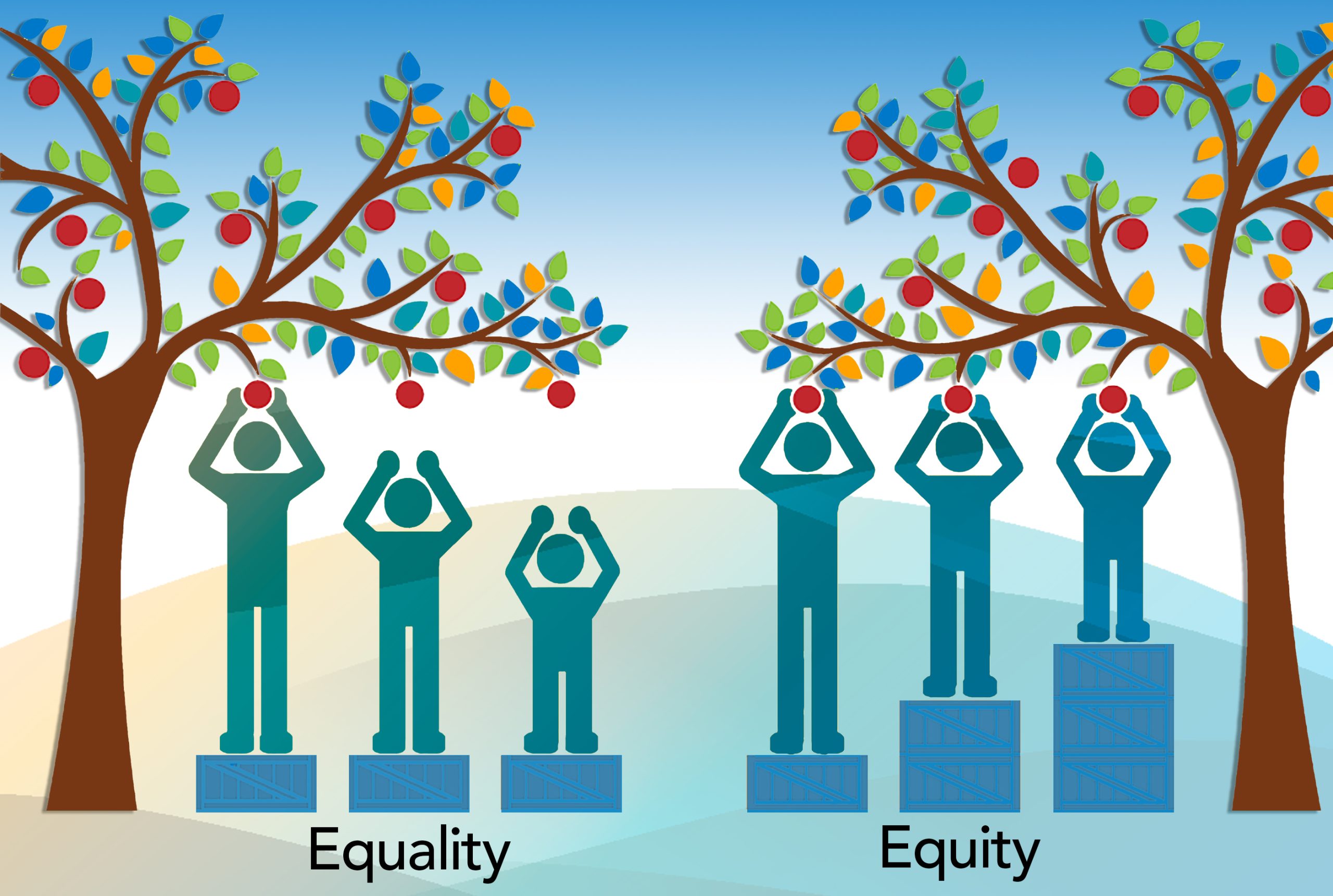Diversity, equity, and inclusion (DEI) all play pivotal roles in today’s workplace. Organizations strive to create a culture of understanding in a diverse and inclusive environment. Diversity involves bringing together people from different backgrounds and identities. However, diversity alone doesn’t paint the complete picture. Concepts such as equality and equity are also important for broadening our understanding of DEI terms. They all work together to create a diverse and inclusive environment.
Equality Versus Equity
Equality is when everyone is given the same access to opportunities and resources. On the other hand, equity accounts for any challenges or disadvantages that certain people or groups experience while pursuing the same goals. The most equitable approach involves providing support to those facing disadvantages, and thereby ensuring they have fair access to any opportunity. This is where DEI comes into play.
Equality Versus Equity Examples
To better understand the difference between equality and equity, here are some examples that apply to the workplace.
An HR manager establishes benefits for the first time.
Equality: The manager decides to offer insurance to all employees and introduces a bereavement policy for paid leave upon an immediate family member’s death.
Equity: The manager consults employees and discovers cultural differences in bereavement practices. The manager adapts the policy to include paid leave for the death of any family member, accommodating diverse needs, including support for employees experiencing miscarriages.
A hiring manager wants to increase diversity on the team.
Equality: The hiring manager identifies a low hiring and retention rate of minority women employees and decides to screen resumes anonymously.
Equity: The hiring manager collaborates with their superiors and team members to understand the challenges faced by these employees and implements changes that significantly lowers the turnover rate.
A manager is trying to coordinate personal time off for all employees during the holiday season.
Equality: All employees are encouraged to take their time off during the last two weeks of December.
Equity: Employees are encouraged to take time off based on their religious and cultural events, recognizing that Christmas may not be the only significant holiday for all.
Importance of Equity in the Workplace
While equity in the workplace is a long-term commitment, it is still a fundamental element for achieving a diverse and inclusive workplace. Consider brainstorming strategies to ensure that your team feels understood, heard, and accepted.
Equality and Equity FAQs
Should there be equality or equity?
In an ideal world, both equality and equity should coexist. While equality ensures that everyone has access to the same opportunities and resources, equity acknowledges that not everyone starts from the same place and strives to rectify imbalances. Combining these concepts ensures that people receive fair treatment while accounting for their unique needs and circumstances.
What is the difference between equality and equity in diversity?
The key difference lies in their focus and implementation. In diversity initiatives, equality might involve treating all employees the same way, while equity involves tailoring strategies to address the specific barriers and needs of different groups. A dual approach is essential for creating a truly inclusive and just society where everyone can thrive.
What is an example of equity vs equality in the workplace?
Equality means that every employee receives the same amount of holiday time off. However, those who don’t celebrate these specific days can use those PTO days as they wish. Equity acknowledges that not all employees are the same. It is fair treatment and opportunities for all employees, regardless of their race, religion, ability, or age, to name a few.
Ready to foster a more inclusive workplace? Try our Diversity Calendar and sign up for our Online Diversity Training today!



